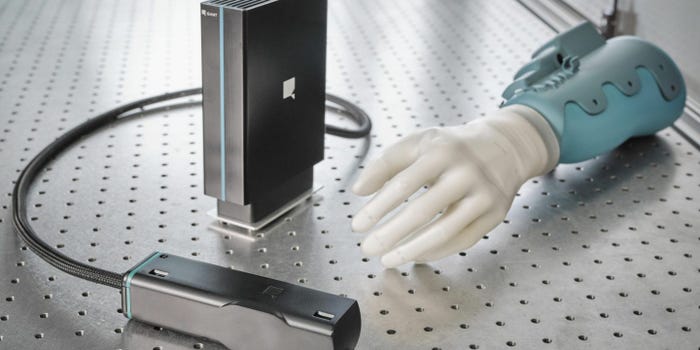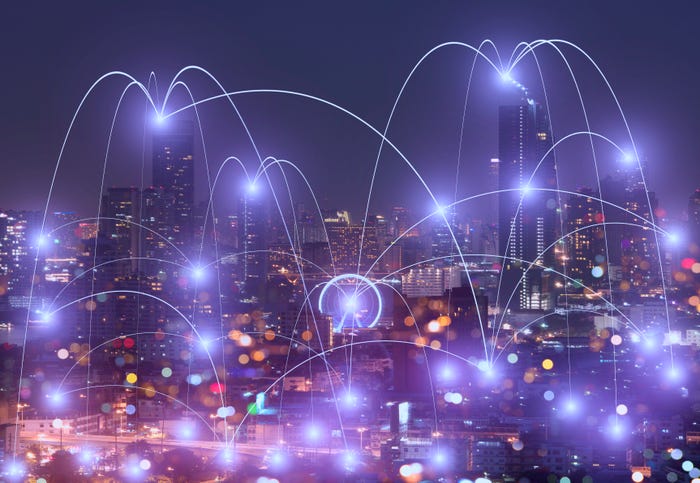The head of cyber investigations for McAfee Advanced Threat Research says weak passwords are still a big problem for Internet of Things security.
October 24, 2018

John Fokker, the head of cyber investigations for McAfee Advanced Threat Research, has a pragmatic viewpoint on cybersecurity that draws on stints in the National High Tech Crime Unit (the Dutch equivalent to the FBI), the Netherlands Police Agency and the Royal Netherlands Marine Corps. Within the National High Tech Crime Unit, he led a cybersecurity-focused data science unit.
In the following, Fokker shares his thoughts on the state of Internet of Things security, the role of nation-states in cybercrime and what he would like to see emerge from the use of machine learning in cybersecurity.
[IoT Security Summit is the conference where you learn to secure the full IoT stack, from cloud to the edge to hardware. Get your ticket now.]
What do you make of the current Internet of Things security landscape?
Looking at our own research, the majority of problems we find still relate to weak passwords. It’s shocking. There is just an abundance of weak passwords out there for IoT devices. Or no password whatsoever for some devices.
Because IoT devices don’t have a common interface, it isn’t clear how updates work or if updates are even offered. You might have an IoT device that’s no longer supported. The question of how the whole life cycle of that device is handled when it comes to patching, upgrading and hardware security isn’t always clear. And nobody who gets an IoT device has the mindset of wondering how it is going to work out in the long run.

John Fokker
We just uncovered problems with Wemo Insight Smart Plugs and with Mikrotik routers and cryptojacking. I’ve heard there is a vigilante security researcher who’s sending out patches for these devices illegally. And the Wemo issue is worrisome to me as well. You role a device like this out at scale and you are creating an attack vector for so many people. It is basically a backdoor you are opening into your home.
I recently renovated my house and I bought all of these new appliances and the lady showing them was really proud, saying they’re all connected. And I asked: “Can you shut them off? I don’t want my stove to send an SMS to my phone or whatever. I just want to cook.” It’s also not clear what you should do if you are selling a house with IoT devices. What should you do with a smart thermostat? Do you swap it out? Or just sign out?
Also related to IoT, we’ve uncovered problems with medical wearables in a hospital setting where we could manipulate the data on medical devices. We found it is possible to manipulate health-care data so doctors would alter their treatment based on the vital signs they see. They might administer medicine to a patient that isn’t needed. So that’s a worry. We need to make sure that the integrity of the signal is totally secured.
How much has changed in the Internet of Things security landscape since the Mirai botnet?
I think with the Marai botnet we saw some people waking up. But there’s still a lot of vulnerable devices out there.
Recent legislation in California basically came out to [tackle the problem of] weak passwords on IoT devices. That’s the first step. Then you have the state of California protected. But guess what? The rest of the world might not be. A country with a lot of people with less stringent laws could still be vulnerable to those type of attacks.
There is the risk that IoT devices get weaponized. And weaponization is all about scale. If you have a large group of devices that are vulnerable, it doesn’t matter if your device is protected. We need to approach this holistically. It’s like the seat belts for cars. We need to ensure that there aren’t IoT devices [that ship with weak password policies]. You have to have an update policy in place. It is a long road. Time will tell.
Why haven’t there been any more DDoS attacks after Mirai that have been as attention-grabbing?
I do know for a fact that running a botnet is hard work. I wouldn’t be surprised if a botnet collapsed because there’s a certain patch being rolled out. It’s always a day job for these criminals to run a botnet. The industry often displays it as something that is easily done but it is tough work and it requires a significant crew to keep it up and running.
There’s a high correlation between people enthusiastic about gaming and denial of service attacks. They often use it to bump the system they are on or to take down a server. You could win a game by targeting an opponent to make sure he has “lag” and gets kicked out of the game. It is foul play.
And then there are just people who use booter sites to attack victims. They might get into some kind of dispute with a bank and then use a booter site to attack the bank.
There is also the potential of IoT security moving more into the physical realm for physical security. Do you see that as well?
Yeah, I think that’s a very interesting field to be able to monitor, predict or model the behavior of humans — like the flow of traffic. That will allow for a lot of new technologies and possibilities, but maybe also some security problems. That could raise privacy issues as well.
Could you share some perspective on what it was like working in the Netherlands’ National High Tech Crime Unit and how that influenced your views on cybersecurity?
Our unit is quite similar to the FBI in the United States and the NCA in the United Kingdom. I was a technical supervisor running a team of about 15 analysts. It was a unique team because they were mixed with conventional police officers and technical experts — all aimed at combating cybercrime.
The Netherlands is a quite large internet hub hosting a lot of websites including a lot of bad stuff. It’s not because the Netherlands is a bad country, but it just has a big internet hub. The Amsterdam internet exchange is one of the five biggest in the world. It’s also connected to the United States via transatlantic cable. All of this makes the Netherlands a very favorable climate not only for legitimate internet services but also for illicit services. For years, we have seen cybercriminals through all of these fake companies rent out hosting space in the Netherlands to host a command and control server infrastructure. All of this leads to a lot of requests for the police to investigate.
When I was there, I was involved in numerous investigations involving nation states, ransomware, botnet takedowns, banking malware, remote administration tools, fraud schemes — all kinds of stuff.
What was it like uncovering the cybercriminal subculture?
After a headline-news cybersecurity event like ransomware attack, large-scale credential theft and all these things, you investigate for a long period of time. And you notice that there’s a cybercriminal ecosystem — an underground economy taking place. You see services being offered. You see bulletproof [internet] hosts offering to host malware, botnets or whatever. You see services for money laundering.
And you used data science techniques to help sort through all of this information?
The data science part was aggregating all the information we had into one big pile and then using data science techniques to find out who the key players were. If you get a key player and you can take them out, you can arrest them and disrupt their operation. Your effect is much bigger than just going after a certain ransomware attack.
In terms of our data science techniques, we used a conventional approach for law enforcement applications. The really progressive neural networks and stuff like that didn’t really apply to us. We analyze the behavior of malware and studied how it propagates in a certain network. We would monitor, for instance, if there’s a new vulnerability and proactively monitor it on a network using machine learning capabilities to find behavior that is not really right. And that would create an alarm.
How would you like to see machine-learning-based applications evolve?
I would like to see that space being expanded for the security space more into the threat intelligence realm. This could also apply to a threat actor’s perspective so you could see a trend related to [cybercriminals’] discussions on certain underground spaces. You could see commonalities that could be fitting for a certain vulnerability or attack vector. And then you could possibly translate that data into a model you can run your own network to detect the likelihood of an upcoming attack?
Could you tell me more about your role in The No More Ramsom Project?
I was one of the co-founders. I thought: “If we as an industry all team up, we could really punch a hole in the ransomware.” We actually did that. We helped a lot of people and helped people save millions of Euros. But then crypto-jacking came along, which wasn’t a reaction to no more ransom, there’s always going to be something new in cybersecurity.
There have been some high-profile cybersecurity problems involving nation states in recent years. What do you see happening there?
We see a shift from more intelligence and espionage to monetary gain — at least for certain nation states. This is more common if they’re oppressed or if they’re under international sanctions. So the criminals used to steal money and now spies are stealing money, too.
There has also been a rise in disruptive activity like what we saw with Wanna Cry and Not Petya and also Stuxnet.
About the Author(s)
You May Also Like


.png?width=700&auto=webp&quality=80&disable=upscale)
.png?width=300&auto=webp&quality=80&disable=upscale)


.png?width=300&auto=webp&quality=80&disable=upscale)